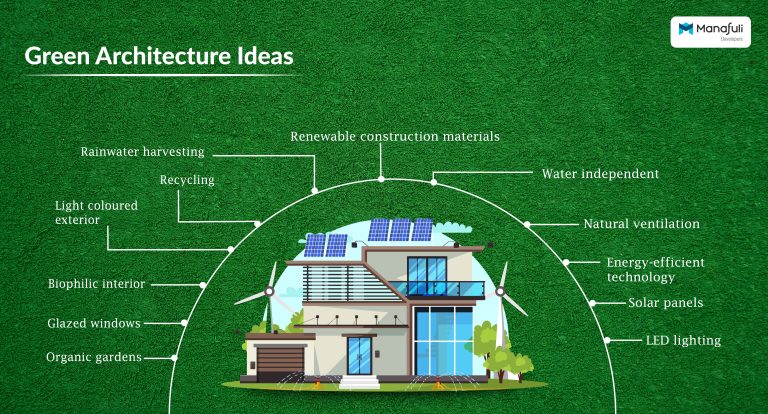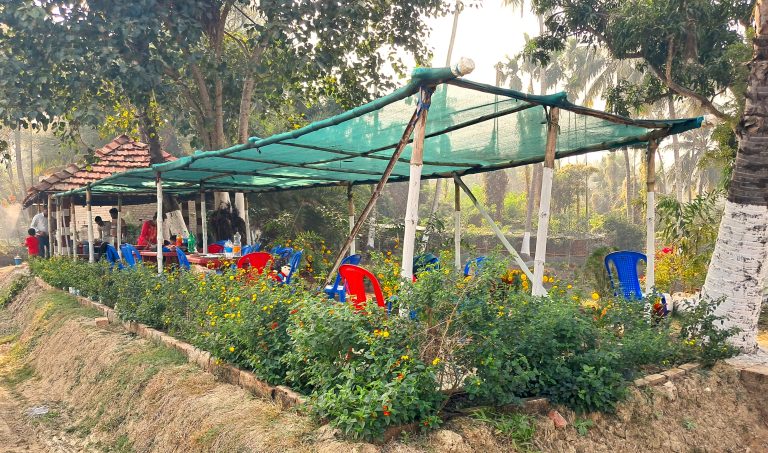Embracing Eco-Friendly Holiday Homes: Sustainable Trends in West Bengal’s Property Market
In the bustling landscape of West Bengal’s property market, a refreshing trend is emerging – the rise of eco-friendly holiday homes. These sustainable abodes not only offer a serene escape from the urban chaos but also embody a commitment to environmental conservation.
As more individuals seek eco-conscious living options, developers, such as us at Manafuli, and plot owners are increasingly embracing green practices in property construction and management. Accordingly, we shall delve into the burgeoning eco-friendly holiday home scene in West Bengal in this article. We’ll also explore its significance, benefits, and future prospects.
The Essence of Eco-Friendly Holiday Homes
Eco-friendly holiday homes, also known as sustainable or green homes, prioritize minimal environmental impact throughout their lifecycle. From design and construction to operation and maintenance, these homes integrate eco-conscious practices and technologies to reduce resource consumption, carbon footprint, and overall environmental degradation.

Sustainable architecture and design
One of the key components of eco-friendly holiday homes is sustainable architecture and design. From the use of renewable materials to passive heating and cooling techniques, Manafuli Developers are incorporating various strategies to minimize energy consumption and maximize efficiency.
Additional Home Designing Tips?
Along with practices to develop eco-friendly holiday homes, you can do a lot more to the interiors and exteriors to attract bookings. The premium plots at Ganga Villas have the potential to invite more natural light, integrate earthy shapes and colours, focus on craftsmanship, introduce biophilic designs, and more.
To know it all, just switch to another blog of Manafuli Ganga Villas and reconnect your holiday home with yourself, nature, quality, and luxury.
Energy-efficient practices
Energy efficiency is a cornerstone of sustainable living, and eco-friendly holiday homes are no exception. Aspirant homeowners at Ganga Villas can implement a range of measures to reduce energy consumption without sacrificing comfort or convenience.
- One option is to fix LED lighting and energy-efficient smart home technology.
- People can also incorporate solar panels and rely on other non-renewable resources.
- Natural ventilation systems are also environment friendly.
- Rainwater harvesting systems, low-flow fixtures, and greywater recycling help mitigate water wastage.
These initiatives will not only reduce our environmental footprint but also eco-friendly holiday homes will minimize your expenses.
Hence, by prioritizing environmental conservation, vacation homes can offer guests a truly immersive experience in nature while minimizing their ecological impact.
Integration with nature
Another hallmark of eco-friendly vacation homes is their integration with the surrounding environment. Instead of imposing structures that disrupt natural landscapes, you can opt for designs that harmonize with the local ecosystem.

Take the example of Manafuli Ganga Villas, a property of premium plots situated at Bakrahat, South Kolkata. This housing society is a gated community near the Ganga River. It’s ideal for building holiday homes. Then the compound is beautified with flower plants, vegetation, and trees. It also has a farm within.
In short, native plant species, organic gardens, and permeable surfaces not only enhance the visual appeal of the surroundings but also support local biodiversity and ecosystem health.
Green amenities and activities
Eco-friendly holiday homes also offer a range of amenities and activities that promote sustainability and environmental awareness. From organic gardens and composting facilities to nature trails and wildlife conservation programs, newly built holiday homes can provide guests with opportunities to engage with and learn about the natural world.
Biodiversity is rich and varied in West Bengal. Correspondingly, eco-friendly holiday homes can serve as hubs for eco-tourism and conservation efforts.
Therefore, by educating guests about local ecosystems and supporting community-based initiatives, your holiday home can play a vital role in preserving the region’s natural heritage for future generations.
Natural building materials
Traditional building materials like bamboo, mud, and recycled wood are gaining prominence in the construction of eco-friendly holiday homes. These materials certainly have a lower environmental footprint. Additionally, it also contributes to the aesthetic appeal and cultural heritage of the region.
So, if you are a plot owner at Ganga Villas, you can absolutely build your vacation home in an efficient way with the help of Manafuli Developers.
What are the Benefits of Eco-Friendly Holiday Homes?
- Sustainable living
By opting for eco-friendly holiday homes, residents contribute to sustainable living practices and foster a sense of environmental stewardship. Reduced energy and water consumption translate to lower utility bills, offering long-term cost savings while minimizing ecological harm.
- Health and well-being
The use of natural building materials and improved indoor air quality in eco-friendly homes promotes better health and well-being for occupants. Reduced exposure to toxins and allergens enhances comfort and productivity, creating a conducive environment for relaxation and rejuvenation.
- Community engagement
Sustainable holiday homes often foster a sense of community among residents who share similar values and lifestyles. Collaborative efforts such as community gardens, composting initiatives, and eco-conscious events strengthen social bonds and collective commitment to sustainability.
- Market appeal
With growing awareness and demand for eco-friendly living spaces, properties that prioritize sustainability enjoy enhanced market appeal and value. Eco-conscious buyers and investors are willing to pay a premium for booking holiday homes that align with their values and offer long-term environmental benefits.
Challenges and Opportunities
While the shift towards eco-friendly holiday homes presents numerous advantages, it is not without challenges. Limited availability of sustainable building materials, higher upfront costs, and regulatory constraints may pose obstacles to widespread adoption.
However, these challenges also present opportunities for innovation, collaboration, and policy advocacy to overcome barriers and accelerate the transition towards a greener property market.
As sustainability continues to gain traction, it has become a key consideration for homeowners and developers. Hence, we can expect to see further innovation in green building practices, technology integration, and community-driven initiatives. Government incentives and regulatory support may further incentivize the adoption of eco-friendly practices, driving positive change across the industry.


